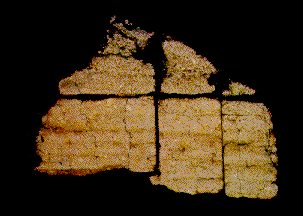|
|
|
|

M E T E O R I T E S & P L A N E T A R Y S C I E N C E |
|
|
|
|
||
|
|
||||
|
. |
Museums
of Natural
History |
The Meteorite
Collection contains
the main masses of the four Danish meteorites Mern, Aarhus,
Jerslev and Felsted as well as several of the large iron
meteorites from the Cape York swarm from Thule in Greenland.
The most remarkable specimens are the iron meteorites
Agpalilik, originally of approximately 20 tons, and Savik 1,
originally around 3 tons, both from the Cape York area. The
sawn through and etched iron slice of Agpalilik, which is
seen in the exhibitions, is the largest of its kind and a
unique exhibition specimen in an international perspective.
From areas outside Denmark and Greenland the collection
contains among others extensive material from the
mesosiderite Vaca Muerta from Chile. |
|
. |
|
. |
Museon |
|
|
|
|
. |
The
Natural History Museum and Botanical
Garden |
|
|
. |
|
. |
Natur
Historiska Riksmuseet |
|
|
. |
|
. |
Natural
History Museum |
--The Meteorites and Impact-Related Materials (300 specimens) contain the main masses of the Swiss meteorites RAFRÜTI (17 kg, find, anomalous iron) and UTZENSTORF (3.8 kg, H5, fall, 16.08.1928) and one of the largest samples of Ulmiz, Switzerland (28g, H5, fall, 25.12.1926). Although the meteorite collection is relatively small, it contains typical specimens from all major classes. Included in the meteorite collection are a suite of thin sections (partly polished) suitable for educational purposes and research. A catalogue is available upon request. . |
|
. |